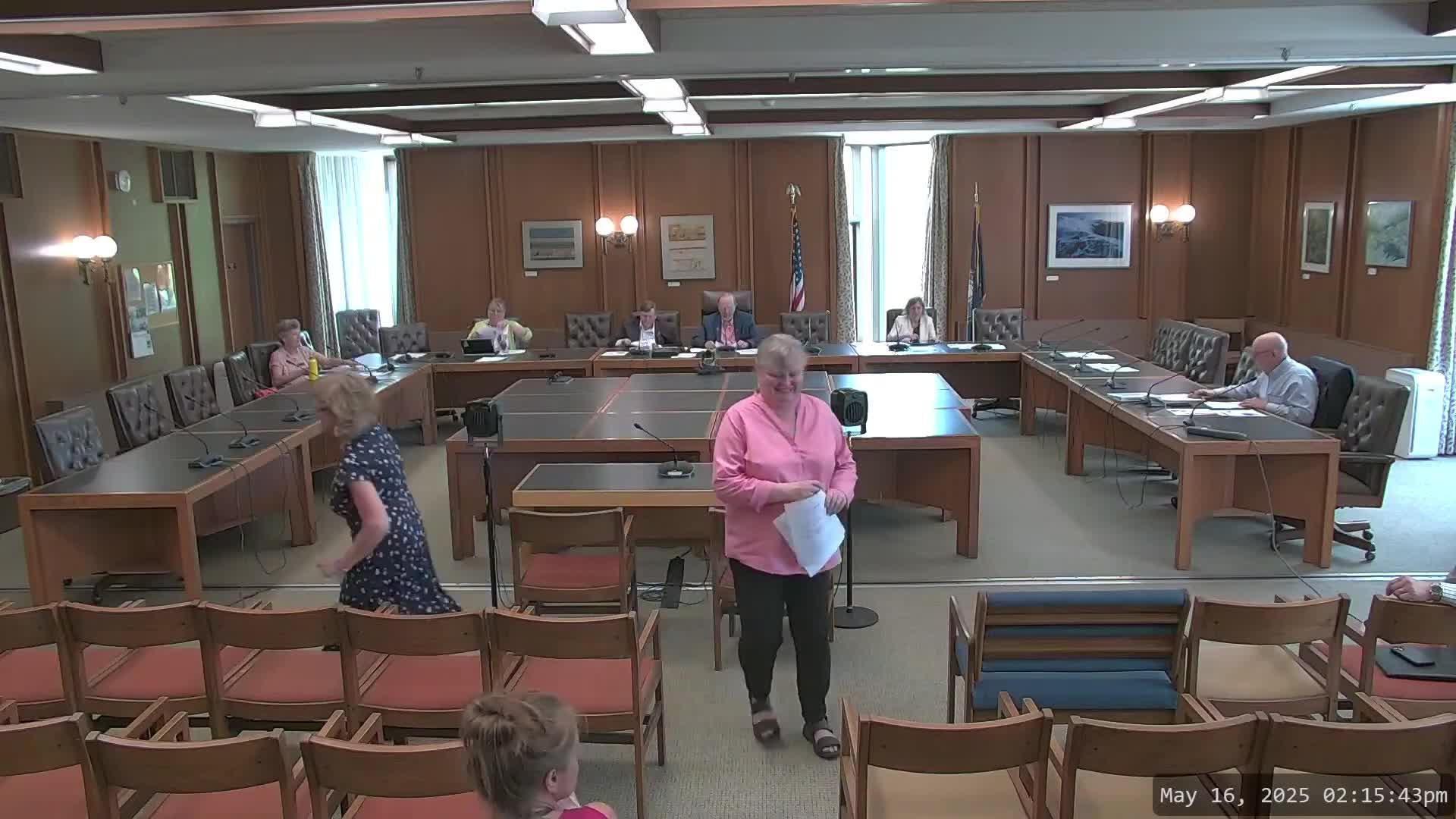New Hampshire Suicide Prevention Council reviews annual report and explores funding impact
May 17, 2025 | Health, Human Services and Elderly Affairs, House of Representatives, Committees , Legislative, New Hampshire
This article was created by AI summarizing key points discussed. AI makes mistakes, so for full details and context, please refer to the video of the full meeting. Please report any errors so we can fix them. Report an error »

The Health and Human Services Oversight Committee of the New Hampshire Legislature convened on May 16, 2025, to discuss the 2023 New Hampshire Suicide Prevention Report, presented by Amy Cook, chair of the New Hampshire Suicide Prevention Council, and Jenny O'Higgins, a senior policy analyst at the Department of Health and Human Services (DHHS).
The meeting began with Cook providing an overview of the Suicide Prevention Council, which is legislatively mandated to oversee the implementation of the state's suicide prevention plan. The council comprises 24 statutory members from various sectors, including state government and nonprofit organizations. Cook highlighted the council's active engagement, noting that public meetings often attract 20 to 40 attendees, contributing valuable input to their initiatives.
O'Higgins then presented key statistics from the 2023 report, marking the fifteenth anniversary of the council. She noted that the council had recently hired a statewide suicide prevention coordinator and received state funding of $100,000 per year, which has significantly enhanced training opportunities across New Hampshire. The report emphasized that suicide is a public health issue that is preventable, and it provided updated data on fatality rates and demographics.
In 2022, New Hampshire recorded 248 deaths by suicide, with rates consistently above the national average for over a decade. The report indicated that suicide remains a leading cause of death in the state, particularly among youth, where it ranks as the second leading cause. O'Higgins stressed the importance of targeted interventions based on demographic data to effectively address the issue.
Committee members raised questions regarding the stark contrast in suicide rates between New Hampshire and neighboring states, particularly the significantly lower rates in Massachusetts. O'Higgins acknowledged the complexity of the issue, citing factors such as rural isolation, access to healthcare, and stigma surrounding mental health as contributing elements. She emphasized the need for a multifaceted approach to prevention, including improved access to mental health resources.
The discussion also touched on the challenges faced by rural areas in accessing mental health services, with representatives expressing concerns about the availability of mobile health units and crisis response resources. O'Higgins assured the committee that the council is committed to addressing these disparities and improving support systems statewide.
The meeting concluded with a commitment to continue monitoring suicide rates and enhancing prevention efforts, with the council promising to provide further data and resources to the committee for ongoing evaluation. The next steps include disseminating the full 90-page report to committee members for detailed review and consideration of future initiatives.
The meeting began with Cook providing an overview of the Suicide Prevention Council, which is legislatively mandated to oversee the implementation of the state's suicide prevention plan. The council comprises 24 statutory members from various sectors, including state government and nonprofit organizations. Cook highlighted the council's active engagement, noting that public meetings often attract 20 to 40 attendees, contributing valuable input to their initiatives.
O'Higgins then presented key statistics from the 2023 report, marking the fifteenth anniversary of the council. She noted that the council had recently hired a statewide suicide prevention coordinator and received state funding of $100,000 per year, which has significantly enhanced training opportunities across New Hampshire. The report emphasized that suicide is a public health issue that is preventable, and it provided updated data on fatality rates and demographics.
In 2022, New Hampshire recorded 248 deaths by suicide, with rates consistently above the national average for over a decade. The report indicated that suicide remains a leading cause of death in the state, particularly among youth, where it ranks as the second leading cause. O'Higgins stressed the importance of targeted interventions based on demographic data to effectively address the issue.
Committee members raised questions regarding the stark contrast in suicide rates between New Hampshire and neighboring states, particularly the significantly lower rates in Massachusetts. O'Higgins acknowledged the complexity of the issue, citing factors such as rural isolation, access to healthcare, and stigma surrounding mental health as contributing elements. She emphasized the need for a multifaceted approach to prevention, including improved access to mental health resources.
The discussion also touched on the challenges faced by rural areas in accessing mental health services, with representatives expressing concerns about the availability of mobile health units and crisis response resources. O'Higgins assured the committee that the council is committed to addressing these disparities and improving support systems statewide.
The meeting concluded with a commitment to continue monitoring suicide rates and enhancing prevention efforts, with the council promising to provide further data and resources to the committee for ongoing evaluation. The next steps include disseminating the full 90-page report to committee members for detailed review and consideration of future initiatives.
View full meeting
This article is based on a recent meeting—watch the full video and explore the complete transcript for deeper insights into the discussion.
View full meeting
